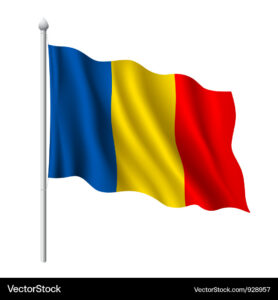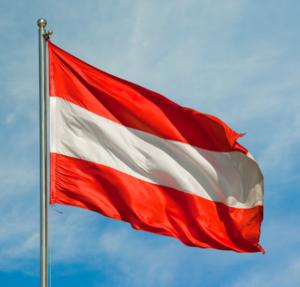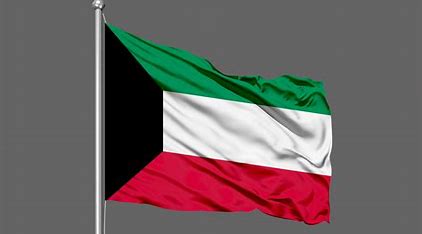
Explore the top 10 historical sites for tourists in Kuwait, which showcase its rich cultural heritage, ancient landmarks, and fascinating history.
Here are 10 sites.
1. Kuwait Towers:
2. The Grand Mosque:
3. Souq Al-Mubarakiya:
4. Failaka Island:
5. Al Jahra Gate:
6. Sadu House:
7. Liberation Tower:
8. Tareq Rajab Museum:
9. Al Kout Beach:
10. House of Mirrors:
1. Kuwait Towers Kuwait:
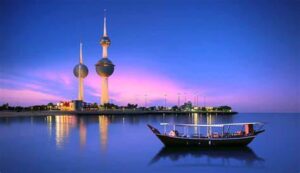
The Kuwait Towers, located in Kuwait City, are iconic architectural landmarks that symbolize the country’s modernization and progress.
Consisting of three towers, the main tower stands at an impressive height of 187 meters and features a revolving observation deck that offers panoramic views of the city and the Arabian Gulf.
Kuwait Towers is not one of the historical sites but is a must-visit for tourists to see the architectural skills.
The design of the Kuwait Towers is inspired by traditional Islamic architecture, with intricate patterns and geometric shapes adorning the exteriors.
Additionally, the towers are adorned with blue ceramic tiles that shimmer in the sunlight, giving them a distinctive and striking appearance.
Aside from their aesthetic appeal, the Kuwait Towers serve practical purposes as well.
The main tower houses a water reservoir that can hold up to 4,500 cubic meters of water, thus providing a crucial source of potable water for the city.
Moreover, the second tower contains two restaurants, one of which rotates, providing diners with a unique dining experience featuring ever-changing views.
Visitors to the Kuwait Towers can explore the observation deck, enjoy a meal at one of the restaurants, or simply admire the towers from the outside.
The towers have become a symbol of national pride for Kuwaitis and a popular tourist attraction for visitors from around the world.
Overall, the Kuwait Towers stand as a testament to Kuwait’s rich cultural heritage, technological advancement, and forward-thinking vision for the future.
They are a must-see destination for anyone visiting Kuwait City.
2. The Grand Mosque Kuwait:
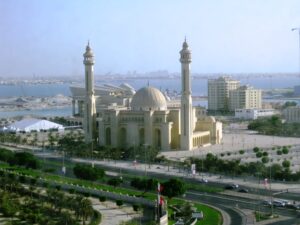
The Grand Mosque in Kuwait, also known as the Kuwait Grand Mosque or Al-Masjid Al-Kabir, is a magnificent and significant religious site located in the heart of Kuwait City.
This architectural marvel is one of the largest mosques in Kuwait and serves as a prominent place of worship for Muslims in the country.
The Grand Mosque’s design is, therefore, a blend of traditional Islamic architecture and modern elements.
It features intricate geometric patterns, towering minarets, and a grand dome that reflects the beauty and grandeur of Islamic art and culture.
The interior of the Grand Mosque is equally impressive, with ornate chandeliers, intricate calligraphy, and exquisite marble work adorning the prayer halls and corridors.
The mosque can accommodate thousands of worshippers during prayer times and special religious occasions, making it a central hub for the Muslim community in Kuwait.
In addition to its religious significance, the Grand Mosque also serves as a cultural and educational center, offering lectures, seminars, and classes on Islamic teachings and values.
The mosque’s serene courtyard and peaceful ambiance provide a tranquil space for contemplation and reflection.
Visitors to the Grand Mosque are welcomed with warmth and hospitality, allowing them to experience the rich Islamic heritage and spiritual atmosphere of this sacred place.
Whether admiring the stunning architecture, participating in prayers, or learning about Islamic traditions, a visit to the Grand Mosque in Kuwait is a truly enriching and enlightening experience for all.
3. Souq Al-Mubarakiya Kuwait:
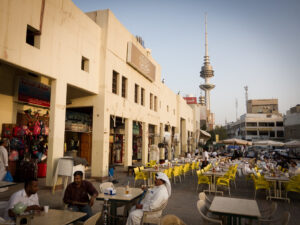
Souq Al-Mubarakiya is a vibrant and bustling traditional market located in the heart of Kuwait City.
This historic souq dates back to the 19th century and has been a hub of commerce and culture for generations.
Furthermore, the market is a labyrinth of narrow alleyways lined with shops selling a wide variety of goods, ranging from spices and textiles to traditional handicrafts and souvenirs.
Visitors to Souq Al-Mubarakiya can immerse themselves in the sights, sounds, and scents of Kuwaiti culture as they wander through the maze of stalls and interact with local vendors.
Additionally, one of the highlights of Souq Al-Mubarakiya is the fresh food market, offering visitors an array of fruits, vegetables, meats, and spices sourced from local producers.
The market is a feast for the senses, with colorful displays of fresh produce and the aroma of spices filling the air.
In addition to food items, the souq also offers a wide selection of traditional Kuwaiti clothing, accessories, and household items.
This makes it a popular destination for both locals and tourists looking to experience authentic Kuwaiti culture.
Beyond shopping, Souq Al-Mubarakiya is a social hub where visitors can sample traditional Kuwaiti cuisine at local eateries, sip on Arabic coffee, or simply soak in the lively atmosphere.
The souq is one of the historical sites of Kuwait, having historic architecture, with its arched doorways and traditional facades, adding to the charm and authenticity of the experience for tourists.
A visit to Souq Al-Mubarakiya is a journey back in time and a celebration of Kuwait’s rich heritage and vibrant marketplace culture.
4. Failaka Island Kuwait:
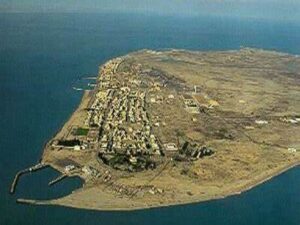
Failaka Island is a picturesque and historically significant island located off the coast of Kuwait in the Arabian Gulf.
This island holds a rich history dating back to ancient times; furthermore, archaeological evidence suggests that it was inhabited as far back as the Bronze Age.
Failaka Island is home to some of the most archaeological and historical sites for tourists in Kuwait, including the remains of ancient Greek temples, churches, and towns.
These sites provide tourists with a glimpse into the island’s mercantile history.
In addition to its historical significance, Failaka Island is a popular destination for tourists and locals alike, offering pristine beaches, crystal-clear waters, and stunning natural landscapes.
Visitors to the island can enjoy a range of outdoor activities, such as swimming, snorkeling, and picnicking on the beach, making it an ideal spot for relaxation and recreation.
Failaka Island also boasts a unique blend of traditional and modern attractions, with traditional Kuwaiti houses, date palm groves, and fishing villages coexisting alongside modern resorts and amenities.
The island’s tranquil atmosphere and scenic beauty make it a perfect escape from the hustle and bustle of city life, allowing visitors to unwind and reconnect with nature.
Whether exploring its archaeological sites, relaxing on its beaches, or simply enjoying the island’s natural beauty, Failaka Island offers a memorable and enriching experience.
It is a hidden gem in Kuwait, providing something for all who venture there.
5. Al Jahra Gate Kuwait:
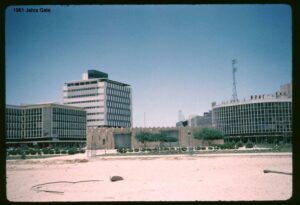
Al-Jahra Gate, also known as Bab al-Jahra, is one of the historical sites in Kuwait City that has great historical and architectural significance and attracts tourists.
This iconic gate is one of the few remaining gates that once served as the entrance points to the old walled city of Kuwait.
Built in the early 1920s, Al Jahra Gate stands as a testament to Kuwait’s rich history and heritage.
The gate’s distinctive design features traditional Islamic architecture, with intricate geometric patterns and ornate details adorning its facade.
Moreover, its imposing structure and grandeur make it a popular spot for visitors seeking to explore Kuwait’s past and immerse themselves in its cultural heritage.
Al Jahra Gate serves as a reminder of Kuwait’s past as a bustling trading hub and a strategic stronghold in the region.
Furthermore, the gate played a crucial role in protecting the city from external threats and served as a symbol of Kuwait’s resilience and fortitude.
Today, Al Jahra Gate stands as a symbol of Kuwait’s enduring legacy and a testament to its rich cultural heritage.
Visitors can admire the gate’s architectural beauty, learn about its historical significance, and appreciate the craftsmanship that went into its construction.
A visit to Al Jahra Gate offers a glimpse into Kuwait’s past and provides a unique opportunity to connect with the country’s history and traditions.
Whether exploring its intricate details, capturing its beauty through photography, or simply reflecting on its historical importance, Al Jahra Gate offers something for everyone.
It is a must-see destination for anyone interested in Kuwait’s rich cultural heritage.
6. Sadu House Kuwait:
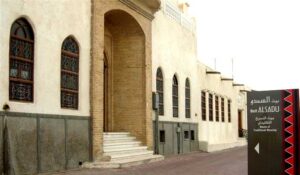
Sadu House, located in Kuwait City, is a cultural center dedicated to preserving and promoting the traditional art of Sadu weaving.
Sado House in Kuwait serves as one of historical sites and is a center for showcasing intricate weaving techniques and vibrant designs that attract tourists.
These Sadu textiles hold a special place in Kuwaiti heritage and offer a unique experience for tourists.
The house itself is a beautifully restored traditional Kuwaiti building, providing visitors with a glimpse into the country’s architectural past while also serving as a platform for celebrating its cultural traditions.
At Sadu House, visitors can explore exhibitions featuring a wide range of Sadu textiles, from intricately woven rugs and carpets to colorful tapestries and garments.
The center also offers workshops and demonstrations where visitors can learn about the art of Sadu weaving firsthand.
This allows them to gain insight into the skill and craftsmanship required to create these stunning pieces.
In addition to its role as a cultural center, Sadu House also hosts events, lectures, and educational programs.
These activities aim to raise awareness about Kuwait’s cultural heritage and promote the importance of preserving traditional crafts.
Visitors to Sadu House can immerse themselves in the rich tapestry of Kuwaiti culture, learning about the history and significance of Sadu weaving while also supporting local artisans and craftsmen.
Overall, Sadu House stands as a testament to Kuwait’s cultural heritage and a beacon of creativity and tradition in the heart of Kuwait City.
It offers a unique opportunity for visitors to connect with the country’s past, celebrate its artistic traditions, and appreciate the beauty of Sadu weaving.
7. Liberation Tower Kuwait:
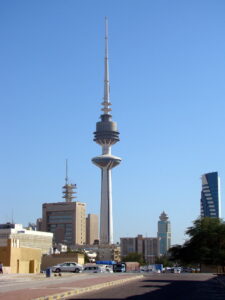
The Liberation Tower, standing tall and proud in Kuwait City, is an iconic symbol of Kuwait’s liberation from the Iraqi occupation in 1991.
This towering structure, reaching a height of 372 meters, serves as a beacon of hope, resilience, and freedom for the people of Kuwait.
Additionally, designed by renowned architect Malene Bjørn, the Liberation Tower’s sleek and modern design reflects the country’s forward-thinking vision and determination to overcome adversity.
The tower’s unique design features a striking blend of Islamic and modern architectural elements, with a distinctive facade adorned with geometric patterns and intricate details.
Its observation deck offers breathtaking panoramic views of Kuwait City, providing visitors with a bird’s eye view of the bustling metropolis below.
The Liberation Tower serves as a telecommunications tower, providing essential communication services to the city.
It also stands as a symbol of Kuwait’s strength and unity in the face of adversity.
It stands as a reminder of the country’s resilience and determination to overcome challenges, inspiring generations to come.
Visitors to the Liberation Tower can marvel at its impressive height, learn about its historical significance, and appreciate the architectural beauty that sets it apart as a landmark in Kuwait City.
A visit to the Liberation Tower is not only an opportunity to witness a marvel of modern engineering but also a chance to pay tribute to Kuwait’s history and celebrate its triumph over adversity.
8. Tareq Rajab Museum Kuwait:
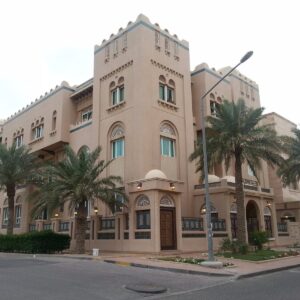
The Tareq Rajab Museum, located in Kuwait City, is a cultural gem that showcases a diverse collection of Islamic art, artifacts, and antiquities.
Founded by the renowned collectors Tareq and Jehan Rajab, this museum in Kuwait is a treasure trove of historical sites and cultural treasures which attract tourists.
It offers tourists a glimpse into the rich heritage of the Islamic world.
The museum’s collection includes a wide range of items, such as intricate ceramics, exquisite textiles, stunning jewelry, and rare manuscripts.
These items are meticulously curated to provide a comprehensive overview of Islamic art and craftsmanship.
Visitors to the Tareq Rajab Museum can explore the various galleries and exhibits that highlight different aspects of Islamic art and culture, from calligraphy and metalwork to textiles and pottery.
The museum’s beautifully designed displays and informative signage offer insights into the artistic traditions and cultural practices of different Islamic civilizations.
This makes it a valuable resource for both scholars and art enthusiasts.
In addition to its permanent collection, the Tareq Rajab Museum also hosts temporary exhibitions, lectures, and cultural events.
These activities further enrich the visitor experience and promote a deeper understanding of Islamic art and heritage.
The museum’s commitment to education and cultural preservation makes it a must-visit destination for anyone interested in exploring the beauty and diversity of Islamic art.
A visit to the Tareq Rajab Museum is not just a journey through history but also a celebration of the enduring legacy of Islamic art and craftsmanship.
9. Al Kout Beach Kuwait:
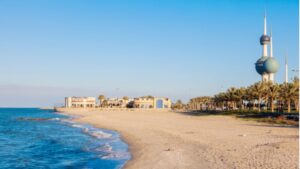
Al Kout Beach in Kuwait is a picturesque and popular destination for locals and tourists seeking a relaxing escape by the sea.
Located in the vibrant area of Fahaheel, AlKout Beach boasts pristine sandy shores and crystal-clear waters of the Arabian Gulf, creating a serene and inviting atmosphere for visitors of all ages.
The beach offers a wide range of activities to enjoy, from swimming and sunbathing to beach volleyball and water sports.
It caters to both those seeking adventure and those looking for a peaceful day by the water.
One of the highlights of AlKout Beach is its scenic waterfront promenade, lined with charming cafes, restaurants, and shops.
It provides a perfect setting for leisurely walks and enjoying delicious local cuisine while taking in the stunning views of the Gulf.
The beach is also a popular spot for families, with designated areas for picnics and children’s play areas, making it an ideal destination for a day of fun and relaxation for the whole family.
Visitors to AlKout Beach can also witness breathtaking sunsets over the horizon, creating a magical and romantic ambiance that is perfect for couples or those looking to capture stunning photographs.
Whether you’re looking to unwind with a book on the sand, take a refreshing swim in the sea, or simply soak up the sun, AlKout Beach offers a tranquil setting.
It provides an idyllic backdrop for a memorable day by the water.
It’s a must-visit destination for anyone looking to experience the beauty and serenity of Kuwait’s coastline.
10. House of Mirrors Kuwait:
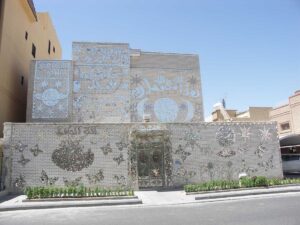
The House of Mirrors in Kuwait is a unique and captivating art installation that has become a must-visit destination for art enthusiasts and tourists alike.
Located in the heart of Kuwait City, this extraordinary house is the brainchild of renowned artist and designer Lidia al-Qattan.
Moreover, the House of Mirrors is a true masterpiece that showcases the intricate craftsmanship and creativity of its creator.
As the name suggests, the House of Mirrors is adorned with a mesmerizing array of mirrors that cover almost every surface, creating a dazzling and surreal visual experience for visitors.
Each mirror is meticulously placed to reflect light and create stunning optical illusions, transforming the space into a magical and enchanting environment.
In addition to the mirrors, the House of Mirrors features a diverse collection of art pieces, sculptures, and installations created by Lidia al-Qattan herself.
These artworks blend seamlessly with the mirrored surfaces, adding depth and meaning to the overall aesthetic of the house.
Visitors to the House of Mirrors can explore the various rooms and corridors, each offering a different perspective and a new discovery.
The house also serves as a cultural hub, hosting art exhibitions, workshops, and events that celebrate creativity and innovation.
Overall, the House of Mirrors in Kuwait is a true gem that showcases the beauty of art and design in a truly unique and immersive way.
It is a testament to the talent and vision of Lidia al-Qattan and a must-see destination for anyone looking to experience art in a new and extraordinary light.

